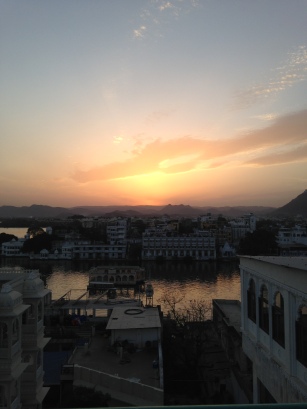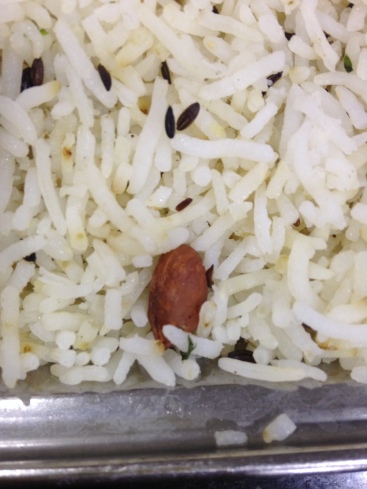If, like me, you are an avid James Bond devotee, you may be aware of a little visit Sir Roger Moore makes to a glamorous Indian land to take on Octopussy. While my own adventures in this Rajasthani city – christened Udaipur – did not include any battles on top of planes mid-flight, classy crocodile submarine disguises, or yoyo blade throwing, it did turn out to be the most undoubtably beautiful city I experienced in India, leaving me awestruck repeatedly.
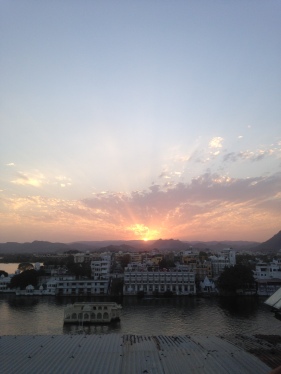
The contrast from Mumbai was shocking. There was grass here. There was shimmery water here, space to think, room to breathe. Trailing around the winding, intimate stoned streets instantly took me back to Venice and the dreamy parallels didn’t end there. I’m talking beautiful bridges overlooking stunning historical architecture, wandering lovers, sparkly rooftop dinners, and the perhaps obvious factor that Udaipur is known as “the Venice of the East”.
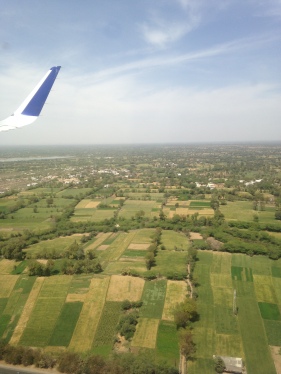
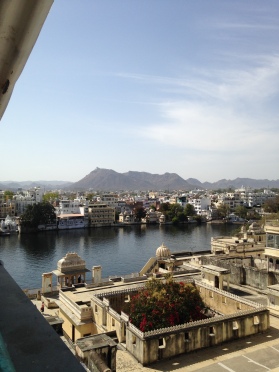

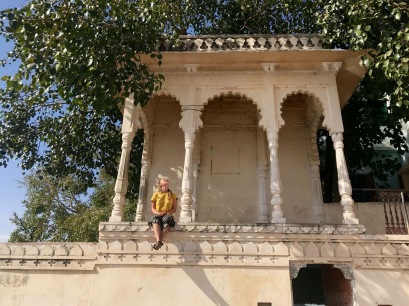
For a start, our hostel was unimaginably gorgeous. After stumbling around the cobblestones in the heat with too many bottles of sunscreen weighing down my backpack, arriving at a palace was out of this world. It was fit for a king. Bunkyard was exquisite with exceptional service and an amazing vibe, making the short time in Udaipur extra sensational.
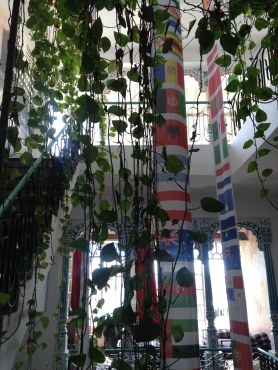

The diary entry of the day read:
“I’m sitting by our window, looking out across mirrored lights on the lake. I can see hundreds of archways. It feels baroque and Muslim and Balinese and Islamic and Arabian. Many mountains. Rooftop chai bliss as the sun sets. Amazing. Why were we in Mumbai when this exists…”
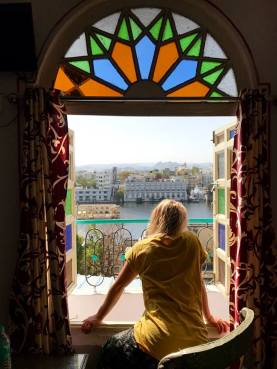
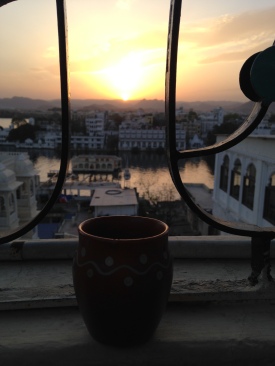
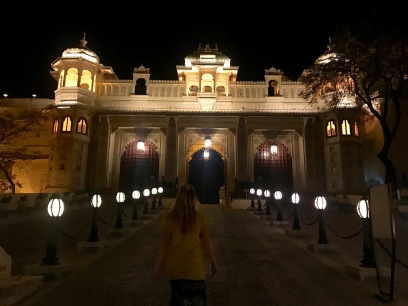
So it was quite a treat. Getting lost in the streets and culture of “The City of Lakes” was a highlight of its own, but if you’re a fellow view-hunter, this place is heaven. Climb above two floors and it’s eye ecstasy. The merchants in this character-rich city have a solid, unofficial competition for the highest restaurant. As you can imagine then, there were a lot of stairs to be climbed. Though the “high” buildings only reach five or six floors, when one is expected to climb to the top before being able to assess the suitability of each menu, believe me there was much quad work. It has got to the absurd but equally brilliant point where many buildings have fashioned several somewhat dodgy extensions to their rooftops to achieve an extra few metres with which to brag. Despite this though, almost every restaurant we came across boasted “highest restaurant in Udaipur!” The other brag point, is obviously the Octopussy card. And yes even though it’s been over thirty years since the film hit screens, locals honestly milk it at every possible moment: the restaurants around us had nightly screenings of the spy movie. Nightly.
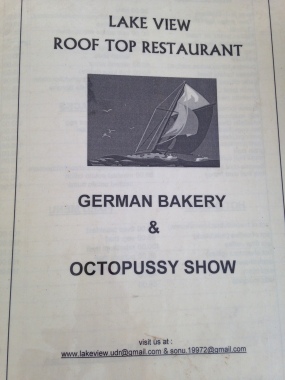
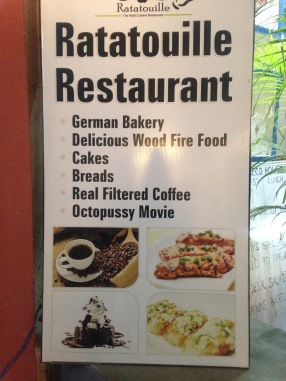
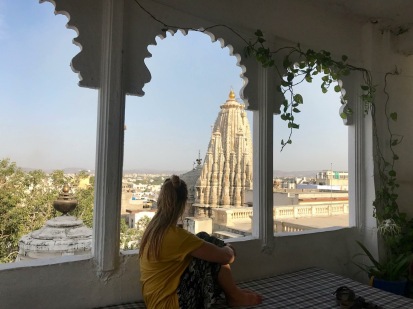
When we weren’t trying to avoid being run over by rickshaws speeding around corners, or getting told by palm readers that I am emotionally weak, we were watching women dance while balancing mountains of pots on their heads, bargaining clothes vendors to their most “happy price”, getting lost in the maze of colourful streets, staring in amazement at puppeteers manipulating their dancing puppets, and learning the secrets of Indian cuisine from the Indian cooking greats themselves: the locals.
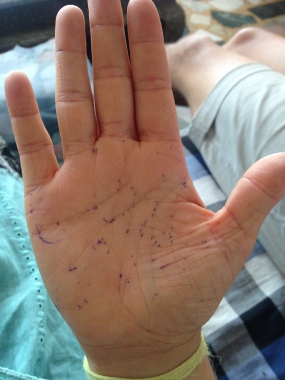
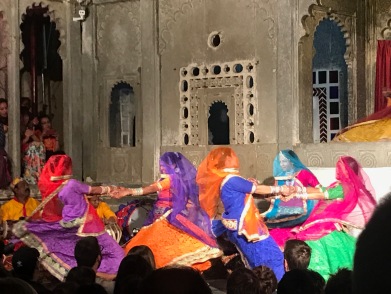
One particular morning I woke to the normal blare of repetitive but joyful singing somewhere in the city. This was the day to visit the City Palace and cruise over the lake to Jagmandir Island for some prime Bond-location-hunting. Whilst waiting for the boats to start running, we hovered around the entrance to the majestic City Palace and decided to get some street food for breakfast. This is a big deal for me as allergy is high and Australian to Indian communication is often poor.
Once back in Sydney, I discovered that Bond has a car chase past the stall we stopped at. With that Hollywood value in mind, you’d think this street vendor would be quite civilised right? Not quite. After clarifying numerous times “no mungfally (peanuts)”, I cautiously bit into my first 30c meal – kachori. This spicy snack is basically a deep-fried pocket of flour stuffed with curry. Once the anxiety that I wasn’t going to die from it had passed, I started getting up to get the attention of the teenager who had served us initially, to ask for another one. It was at this moment that I felt a significant cultural difference. Here in the doorway of the tiny seating area, sat the teenage waiter on his phone with his back to us. The seating area was so small we could see everything on his phone with minimal effort. This young man was unashamedly invested in an unmentionable video. After several days of witnessing the different culture India had to offer, it hadn’t occurred to me that the people here might watch porn too. What was most surprising though, was his ability to switch so intermittently between serving customers, and returning to his phone. In fact, I was somewhat impressed at his diligence to return after each customer and find the spot he was up to so he could resume his absorbed and curious stare.
I was less impressed when he then served me my second kacholi with his bare hands…
Several “Namaste”s later, we were zooming around the majestic Lake Pichola Bond-style (it was much more of a slow chug on one of the tourist boats), till we got to Jagmandir Palace. This exquisite island is everything I imagined a romantic Indian city to be: elephant statues, breathtaking views, archways looking out to historical cities…

And then there was Monsoon Palace. If you too are on a quest for sights that make your eyes leap out of their sockets, this is the place. If brave enough to venture up the twisting mountain side in a rover that’s managed to squeeze upwards of 12 people in, without falling on the driver as he swings round the corners, then you’ll find yourself face to face with the glorious Aravalli Hills that envelope the city (complimentary monkeys swinging around the stunning architecture).
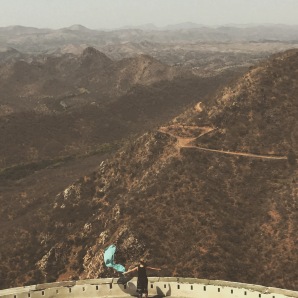


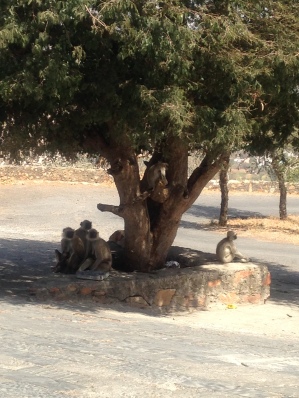
In terms of sheer beauty, cultural immersion, and “that one place on the trip you’d go back to”, Udaipur has smashed out first place 110%.
Cue Bond theme.


